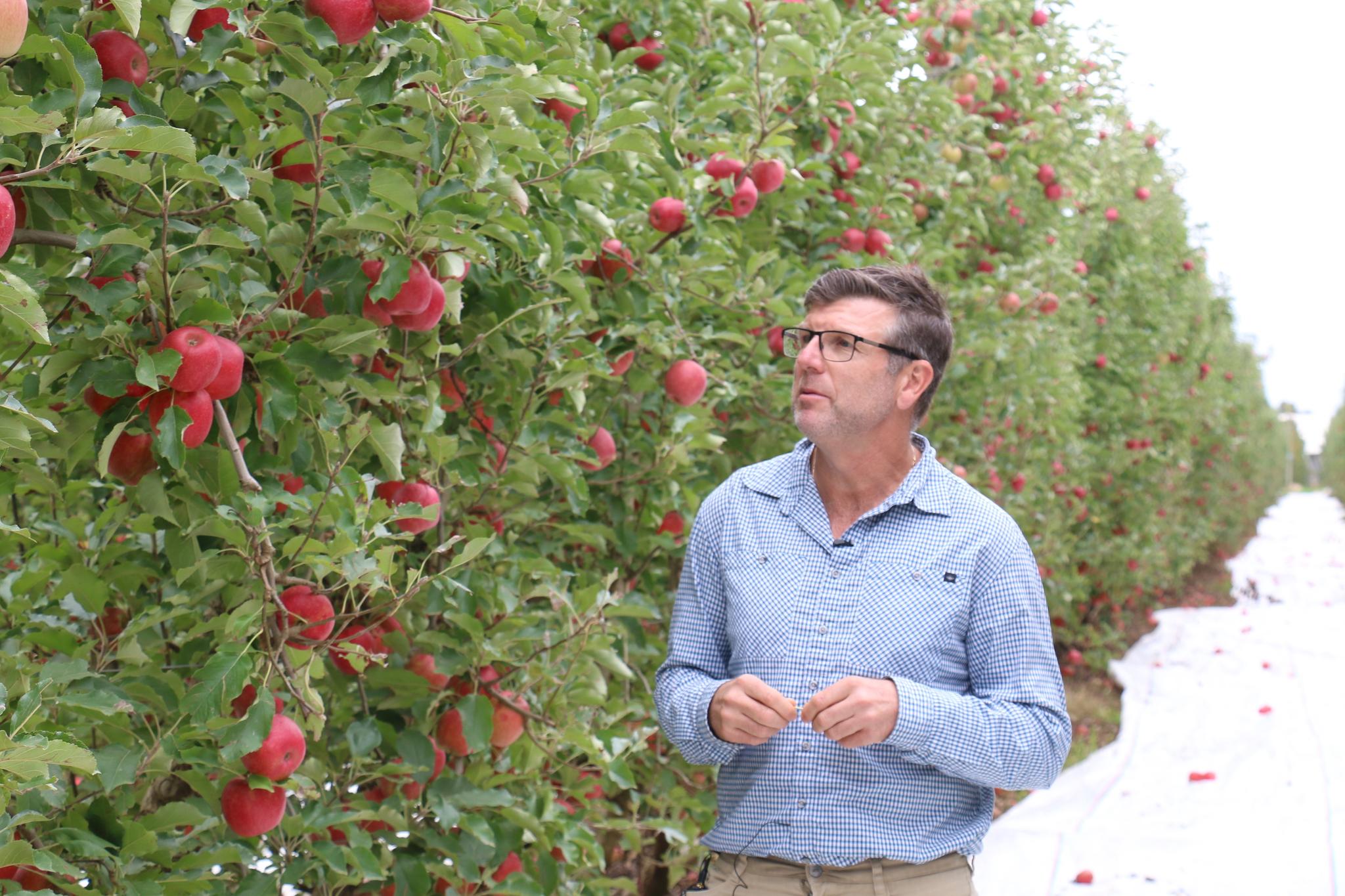Scanner provides a big picture view

Plunkett Orchards manager Jason Shields inspects a crop of Ruby Matilda apples. Photo: Supplied
As one of the first Australian fruit growers to embrace Cartographer, Plunkett Orchards manager Jason Shields was looking for a way to gather more information to identify potential problems or confirm they were making the right decisions.
Plunkett Orchards is one of the Goulburn Valley’s biggest fruit growers, with about 200ha of orchards in production at Ardmona, west of Shepparton.
They produce mostly apples: Pink Lady, Granny Smith, Royal Gala, Sundowner, Rocket and Kanzi varieties.
The orchard has been transformed over a period of 15 years to a multileader tree system to promote more uniform fruit quality and make mechanisation easier.
Workers now use elevated semi- automated work platforms for pruning trees, and thinning and picking fruit.
Jason is constantly on the lookout for new ways to improve efficiency and hosts numerous research trials, including a three-year project from 2020-2023 by Agriculture Victoria examining the accuracy of Cartographer in measuring new metrics, including fruit colour.
The work was part of PIPS3 Program’s Advancing sustainable and technology driven apple orchard production systems (AP19003) project. The project was funded by Hort Innovation using grower research and development levies, contributions from the Australian Government and investment by Agriculture Victoria which bought a Cartographer unit.
In 2021-22, Jason used Cartographer across the Granny Smith and Pink Lady apples for its first full season.
The block was scanned in December before thinning and in April before harvest, with accuracy of 93 per cent and 94 per cent, despite relatively high variability in fruit numbers.
The first thing it identified from flower mapping was two “part rows” that had been missed during pruning.
Later in the season it provided estimates of yield and fruit size profiles.
“This was good because it helped us make decisions based on which blocks we had the best size in and where we needed to pick first, how many pickers we’d need and how many bins we’d need,” he said.
As a large scale grower, with a wide harvest window for the two varieties, Jason said the maps were also useful for suggesting where they could best target application of growth regulators, such as Harvista, to delay ripening, reduce fruit drop, and allow smaller fruit to keep growing for another three or four weeks.
The major benefit of fruit mapping was having the “big picture”, something that was impossible to get from driving up and down a few rows at a time.
“I had been driving around my Granny Smiths before we sent the scanner through,” he said.
“I’d drive through one day and go ‘Everything’s small’ then a week later ‘It’s all good’ and then I’d drive it a week later and go ‘No, it’s small again’. It all depended on which row you drove down. I’m thinking I might have 15 rows of light trees and 15 rows of heavy trees in the same block; maybe I should be just picking half a block at a time. But the map didn’t come back like that. It told a different story to what my eyes were telling me.”
Scanning for fruit colour also picked up the difference between a row in an Agriculture Victoria crop load experiment and the rest of the Pink Lady block where a mechanical defoliator had been used to remove leaves to help the fruit develop its trademark pink blush.
“The picture showed there was just one row that had bad colour,” Jason said. “We’d ribboned it off and told everyone they can’t drive down that row, so we didn’t defoliate it. The difference was amazing.”
Summer storms seriously affected fruit production so Cartographer was not used by Plunkett Orchards this year.
However, given the positive results from the Agriculture Victoria trial, Jason remains keen to further explore the benefits and costs of the Cartographer technology in future.
“I think there’s so much potential in this, it’s really exciting,” Jason said.
“But to effectively use new technology, robots et cetera, we need to have a consistent canopy, a consistent yield throughout the block, and this technology is helping us to do that.”
